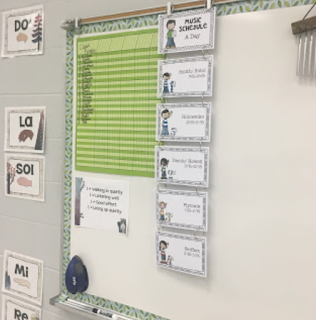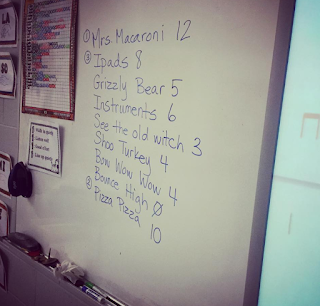The term "differentiation" has been used more and more often in education lately. What does it mean? How does it apply to the music room?
According to Carol Ann Tomlinson--an expert on differentiation-- differentiated instruction is defined as factoring students’ individual learning styles and levels of readiness first before designing a lesson plan (from
this blog post from Concordia University- Portland.) So what does this look like in the music classroom?
I've heard many music teachers say that differentiation happens naturally in the music room. I agree...to a degree. There IS a lot of differentiation that happens organically in music, but there are also differentiation strategies that we can employ with thought and intention. Here are my favorite ways to differentiate:
Include lots of variety
By including lots of variety in your lessons, including activities that cover the gamut of Bloom's Taxonomy, you can help address each student's ability. For example, in one lesson, you could ask students what these rhythms are called (i.e. ta and ti-ti, which would be remembering), you could have students apply their knowledge of rhythms by playing rhythm patterns on non-pitched percussion, and you could have students create using ta and ti-ti. This variety would not only lead to an active, engaging lesson, but would allow students opportunities to showcase their knowledge at their ability level.
Plan for extensions and simplifications
Let's say you've given your students the chance to figure out how to play "Bounce High" on barred instruments, with G as sol. If a child is able to figure it out sooner than other students, you could have them figure it out with C' as sol, or A as sol (if you add a F# bar.)
If a student is struggling with figuring it out, you might write in the note letters for them, or give them a simpler song without la, such as "See Saw."
Have students self-differentiate
If you've given students a few tasks at different levels (different ostinati, for example) you could have students choose which one they'd like to do. If one of the ostinati is simpler than the others and one is more difficult, this can be a great way for students to perform at their ability level and feel comfortable.
This could work with Orff arrangements, as well. After teaching a more difficult part, I've sometimes looked for students who could perform the body percussion to assign that part, and I've also simply asked students who wanted to try it. Students who are ready for the challenge will volunteer, and those who are not quite ready likely won't.
Differentiate during centers
This has been new for me this year. I've created at least two centers during centers lessons that are differentiated. At these centers, students complete the task for the color they've been given. I've taken pre-test data, and have sorted students into three groups (level 1/ basic= blue, level 2/ proficient= green, and level 3/ advanced= pink.) Before students start doing centers, I hand them a slip of paper with their color, so they know which task to complete at those centers.
One example of this is rhythm flashcards. At this center, students play patterns on non-pitched percussion. The blue flashcards at that center have simpler patterns, the green flashcards have middle-of-the-road patterns, and the pink flashcards have more challenging patterns. If a student has been given a green slip of paper, they play the green flashcards. I've also combined this idea with having students choose their own centers, like in
this blog post, where students can float from center to center and change whenever they want, but at the centers with differentiation, they do that color task.
Looking for more ideas for differentiation with centers? Check out this bundle; individual sets can be bought separately.
Also, check out
this post by Debbie from Crescendo Music with more differentiation strategies.
What's your favorite way to differentiate in the music room? Feel free to comment below, and happy teaching!





























































MENU SOCIAL LINKS